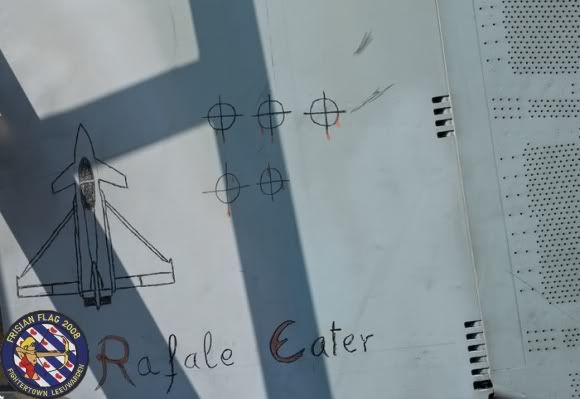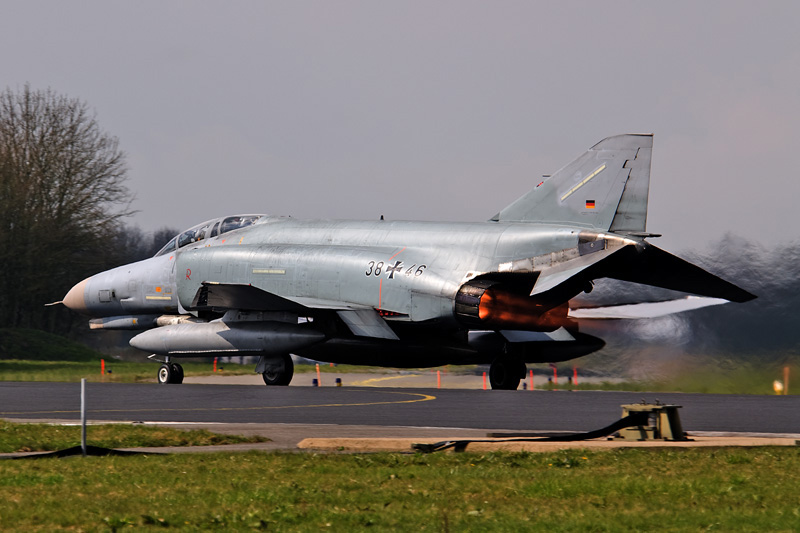Viv S wrote:arthuro wrote:I am not convinced by sensor fusion for the typhoon in the near future (P4E). It is not just a software patch but rethinking and redesigning the whole system. True sensor fusion that you can find on the F35 or the rafale is very different from mere sensor corelation and it takes years to achieve.
A single track fusing radar, ESM and PIRATE is exactly what will be delivered with the P4E upgrade. And yes it
does consist of a software upgrade. BTW the Rafale doesn't fuse the IR feeds either (of course the new F3s omit the IRST altogether so its not even an option there). The F-35 of course is on a entirely different level, being the
only one to deliver effective multi-ship fusion (absent even on the F-22) albeit at Blk 3F (2017).
Typhoon already corelates tracks into a single screen but this is different from true sensor fusion where almost raw sensor inputs are processed in a single processing units to build the tactical situation (the MDPU for the rafale).
To achieve true sensor fusion, a complete redesign of Typhoon system architecture is required. This is way harder than to develop an AESA radar, TVC, CFTs etc...And it takes years of debugging to be certain that your single track is realy reliable.
Just read on page 3/8 here :
http://www.dassault-aviation.com/wp-con ... e_nr_6.pdf
The powerful data fusion algorithms combine and compare the data gathered by all Rafale sensors, and accurately position and identify targets. It’s much more than simple correlation as it gives the pilot an accurate and unambiguous tactical picture. One of the key advantages of the system is its ability to identify and classified the type of target/threat, by using either the Spectra suite or the TV sensor of the FSO. When all tracks are positively identified, the system automatically creates a synthetic image with all enemy and friendly tracks shown in a clear and explicit way. Off-board sensor can also contribute data to the integrated tactical air picture, via the datalink. Wingmen or AEW aircraft can feed their data to the leader’s system, thus helping target-sorting and co-operation within the formation. Multichannel target acquisition/ tracking associated with smart sensor fusion key-enabler which will radically change the face of air warfare. This combination of multisensor technology and smart data fusion significantly increases mission success rates through enhanced crew awareness and improved aircraft survivability. With its multisensor technology, its advanced data fusion management system, and its remarkable Man-Machine Interface (MMI), the Rafale clearly stands in a category of its own and no other fighter in the world has such a wide array of systems at its disposal.
You can read this also (page 6/11)
http://www.defense-aerospace.com/dae/sp ... ox3_14.pdf
All the Rafale’s sensors are closely integrated and all data is automatically fused to massively reduce pilot workload and significantly increase tactical effectiveness. “Our goal was to avoid saturating the pilot, explains Jean-Noël Stock, Thales Rafale Programme Director. This smart data fusion significantly increases mission success rates through enhanced crew awareness and improved aircraft survivability. This is a crucial advantage over our competitors.”
As for IR, Mica - IR sensors are fully fused into rafale system. Ans there is 48 IR channel available for the rafale fleet which are just plug and play.
read this from Brazilian test pilot:
Data Fusion
PCWRITE. This combination of "letters" appears in the lower left corner of the HLD - Head Level Display, giving a real-time and instant confirmation of which sensors are signaling at that moment. Each letter representing either the RBE2 AESA radar, the Infrared / Laser / TV Front-Sector Optronics (FSO), the internal system of electronic warfare SPECTRA EW, IFF (identification friend-or-foe), are merged into a unified and clear visual symbolism directly on the SA display (situational awareness), and that means keeping the pilot in the situational loop. Rarely (not witnessed at any time during our evaluations) would the pilot ever be unaware of the environment within the 360º “bubble” surrounding the aircraft.
The heart of this data fusion is the MDPU - Processing Unit Data Modules that com-prises 19 LRUs (flight-line replaceable units), each providing a processing capacity up to 50 times greater than the previous generation of fighters. Translation: The pilot has a reduced workload, which enables him to act like a real tactical decision maker, rather than a mere sensor operator.
The key point of this data fusion is to overcome the limitations of any one particular sensor. For example, if it relies on waveforms, frequency, or infrared imaging, and the angle, distance, altitude, weather conditions or even a malfunction pose a limita-tion; other components supplement the formation of the big picture, situationally. The MDPU collects consolidated data from different sources based on various technologies, complementing, organizing and providing information through symbolism refined, reliable and unified.
(...)
As mentioned before Rafale Data fusion can use visual information from MICA IR infrared seeker, processing and merging data, acting as an extra sensor, while aboard the aircraft rails.
http://www.defesanet.com.br/rafale/noti ... fference-/
And here is a rafale pilot input on sensor fusion vs the competition:
Cne Romain:
One must first know that France has a very high credibility worldwide in terms of jamming. So one should be particularly ill informed to think there could be a beginning of a gap in Spectra.
Spectra is a accomplished self-protection system that we are developping every day with programming, testing and with software and hardware updates: month after month ,Spectra is evolving.
In my opinion, i think we are currently using only 2/3 of Spectra capacities: We still have much work to do to optimize our jamming libraries and methods of use. Finally, just to give you an idea of what stealth is or isn't : to be 100% stealth, one should neither be seen nor to let others know they are seen ... For example, a stealth aircraft that would use its radar to fire a missile, would be suddenly no longer stealth
One of the great strength of the Rafale is here: we do not need to activate our radar to fire our missiles far beyond visual range ..
Corentin
Hello Captain,
Thank you for these clarifications! I am perhaps too curious but can you explain how the Rafale is capable of firing beyond visual range "passively", and how far?
Do other airplanes of the same generation (EF, Gripen, F-18) use, to your knowledge, equivalent techniques ?
Cne Romain:
The Rafale merges the informations coming from its sensors to give a very reliable and clear picture to the pilot. It's already a considerable advantage over previous-generation aircraft, including EF and Gripen. When the pilot decides to fire a air to air missile, the missile leaves the aircraft taking automatically into account all available informations.
When the radar is not used, the missile can use the OSF (a TV camera coupled with a laser rangefinder), the informations provided by another aircraft via the MIDS, a heat source detected by the OSF or a MICA IR, or finally a localization by SPECTRA. Faced with these sensors, stealth is useless and we know, thanks to our tests ,that our missiles are very effective in such context.
about captain romain:
http://henri.eisenbeis.free.fr/belotti/ ... romain.htm
You should also read on the previous page of this topic the comment of the journalist on this issue.

